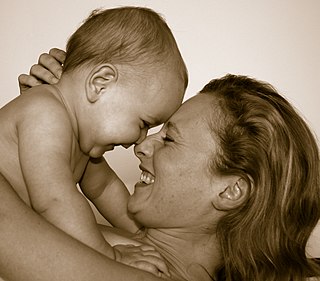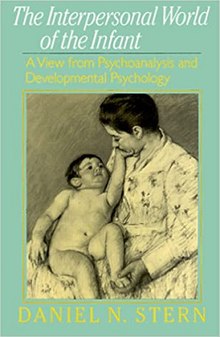Attachment disorder is a broad term intended to describe disorders of mood, behavior, and social relationships arising from unavailability of normal socializing care and attention from primary care giving figures in early childhood. Such a failure would result from unusual early experiences of neglect, abuse, abrupt separation from caregivers between three months and three years of age, frequent change or excessive numbers of caregivers, or lack of caregiver responsiveness to child communicative efforts resulting in a lack of basic trust. A person's attachment style is permanently established before the age of three. A problematic history of social relationships occurring after about age three may be distressing to a child, but does not result in attachment disorder.

Reactive attachment disorder (RAD) is described in clinical literature as a severe and relatively uncommon disorder that can affect children, although these issues do occasionally persist into adulthood. RAD is characterized by markedly disturbed and developmentally inappropriate ways of relating socially in most contexts. It can take the form of a persistent failure to initiate or respond to most social interactions in a developmentally appropriate way—known as the "inhibited form". In the DSM-5, the "disinhibited form" is considered a separate diagnosis named "disinhibited attachment disorder".

Attachment theory is a psychological, evolutionary and ethological theory concerning relationships between humans. The most important tenet is that young children need to develop a relationship with at least one primary caregiver for normal social and emotional development. The theory was formulated by psychiatrist and psychoanalyst John Bowlby.
Dyadic developmental psychotherapy is a psychotherapeutic treatment method for families that have children with symptoms of emotional disorders, including complex trauma and disorders of attachment. It was originally developed by Daniel Hughes as an intervention for children whose emotional distress resulted from earlier separation from familiar caregivers. Hughes cites attachment theory and particularly the work of John Bowlby as theoretical motivations for dyadic developmental psychotherapy.

Attachment in children is "a biological instinct in which proximity to an attachment figure is sought when the child senses or perceives threat or discomfort. Attachment behaviour anticipates a response by the attachment figure which will remove threat or discomfort". Attachment also describes the function of availability, which is the degree to which the authoritative figure is responsive to the child's needs and shares communication with them. Childhood attachment can define characteristics that will shape the child's sense of self, their forms of emotion-regulation, and how they carry out relationships with others. Attachment is found in all mammals to some degree, especially primates.
Attachment measures refer to the various procedures used to assess the attachment system in children and adults. Researchers have developed various ways of assessing self-protective strategies and patterns of attachment. Some methods work across the several models of attachment and some are model-specific.
Co-regulation is a term used in psychology. It is defined most broadly as a "continuous unfolding of individual action that is susceptible to being continuously modified by the continuously changing actions of the partner". An important aspect of this idea is that co-regulation cannot be reduced down to the behaviors or experiences of the individuals involved in the interaction. The interaction is a result of each participant repeatedly regulating the behavior of the other. It is a continuous and dynamic process, rather than the exchange of discrete information.
Attachment-based psychotherapy is a psychoanalytic psychotherapy that is informed by attachment theory.
Daniel N. Stern was a prominent American developmental psychologist and psychoanalyst, specializing in infant development, on which he had written a number of books — most notably The Interpersonal World of the Infant (1985).
The motherhood constellation is a concept coined by Daniel N. Stern to describe the mental organization in which the child is most prominent. It describes that the primary caregiver's own biological readiness state. D. W. Winnicott referred to this state as primary maternal preoccupation.
Attachment-based therapy applies to interventions or approaches based on attachment theory, originated by John Bowlby. These range from individual therapeutic approaches to public health programs to interventions specifically designed for foster carers. Although attachment theory has become a major scientific theory of socioemotional development with one of the broadest, deepest research lines in modern psychology, attachment theory has, until recently, been less clinically applied than theories with far less empirical support. This may be partly due to lack of attention paid to clinical application by Bowlby himself and partly due to broader meanings of the word 'attachment' used amongst practitioners. It may also be partly due to the mistaken association of attachment theory with the pseudo-scientific interventions misleadingly known as attachment therapy. The approaches set out below are examples of recent clinical applications of attachment theory by mainstream attachment theorists and clinicians and are aimed at infants or children who have developed or are at risk of developing less desirable, insecure attachment styles or an attachment disorder.
Patricia McKinsey Crittenden is an American psychologist known for her work in the development of attachment theory and science, her work in the field of developmental psychopathology, and for creation of the Dynamic-Maturational Model of Attachment and Adaptation (DMM).
The Diagnostic Classification of Mental Health and Developmental Disorders of Infancy and Early Childhood-Revised is a developmentally based diagnostic manual that provides clinical criteria for categorizing mental health and developmental disorders in infants and toddlers. It is organized into a five-part axis system. The book has been translated into several languages and its model is widely adopted for the assessment of children of up to five years in age.
Separation anxiety disorder (SAD) is an anxiety disorder in which an individual experiences excessive anxiety regarding separation from home and/or from people to whom the individual has a strong emotional attachment. Separation anxiety is a natural part of the developmental process. It is most common in infants and little children, typically between the ages of six to seven months to three years, although it may pathologically manifest itself in older children, adolescents and adults. Unlike SAD, normal separation anxiety indicates healthy advancements in a child's cognitive maturation and should not be considered a developing behavioral problem.
Interaction theory (IT) is an approach to questions about social cognition, or how one understands other people, that focuses on bodily behaviors and environmental contexts rather than on mental processes. IT argues against two other contemporary approaches to social cognition, namely theory theory (TT) and simulation theory (ST). For TT and ST, the primary way of understanding others is by means of ‘mindreading’ or ‘mentalizing’ – processes that depend on either theoretical inference from folk psychology, or simulation. In contrast, for IT, the minds of others are understood primarily through our embodied interactive relations. IT draws on interdisciplinary studies and appeals to evidence developed in developmental psychology, phenomenology, and neuroscience.
Colwyn Trevarthen is Emeritus Professor of Child Psychology and Psychobiology at the University of Edinburgh.
Accelerated experiential dynamic psychotherapy (AEDP) is an empirically validated mind-body psychotherapy that is informed by research in the areas of attachment theory, emotion theory, and neuroscience of change. This model of psychotherapy incorporates techniques from experiential therapies and ISTDP.
Social emotional development represents a specific domain of child development. It is a gradual, integrative process through which children acquire the capacity to understand, experience, express, and manage emotions and to develop meaningful relationships with others. As such, social emotional development encompasses a large range of skills and constructs, including, but not limited to: self-awareness, joint attention, play, theory of mind, self-esteem, emotion regulation, friendships, and identity development.

Interpersonal neurobiology (IPNB) or relational neurobiology is an interdisciplinary framework associated with human development and functioning. It was developed in the 1990s by Daniel J. Siegel who sought to bring together a wide range of scientific disciplines in demonstrating how the mind, brain, and relationships integrate to alter one another. In IPNB, the mind is viewed as a process that regulates the flow of both energy and information through its neurocircuitry, which is then shared and regulated between people through engagement, connection, and communication. Drawing on systems theory, Siegel proposed that these integrated processes within interpersonal relationships can shape the genetically programmed maturation of the nervous system. Siegel thus believes that the mind has an irreducible quality which informs his approach.
The dynamic-maturational model of attachment and adaptation (DMM) is a transdisciplinary model describing the effect attachment relationships can have on human development and functioning. It is especially focused on the effects of relationships between children and parents and between reproductive couples. It developed initially from attachment theory as developed by John Bowlby and Mary Ainsworth, and incorporated many other theories into a comprehensive model of adaptation to life's many dangers. The DMM was initially created by developmental psychologist Patricia McKinsey Crittenden and her colleagues including David DiLalla, Angelika Claussen, Andrea Landini, Steve Farnfield, and Susan Spieker.





